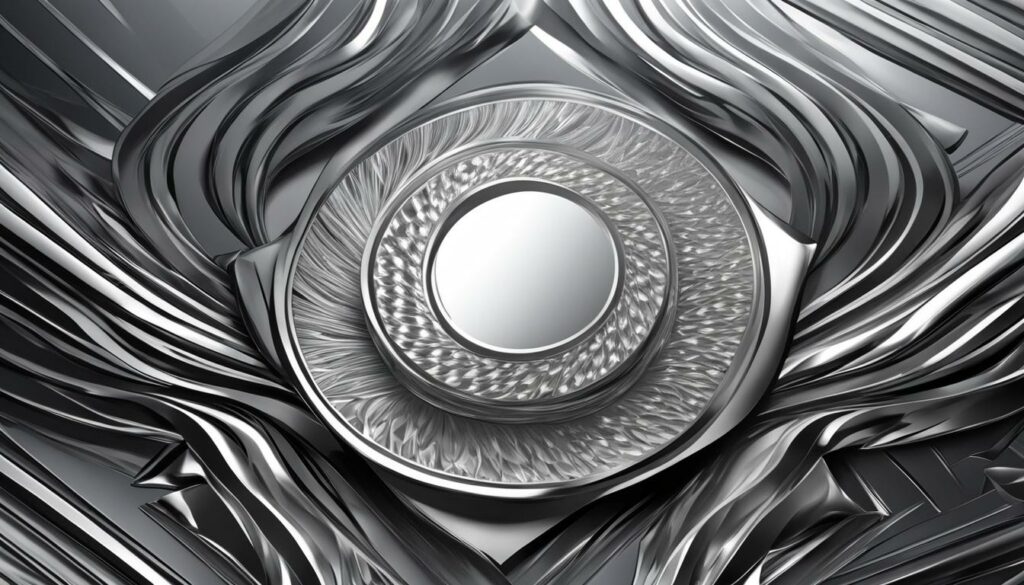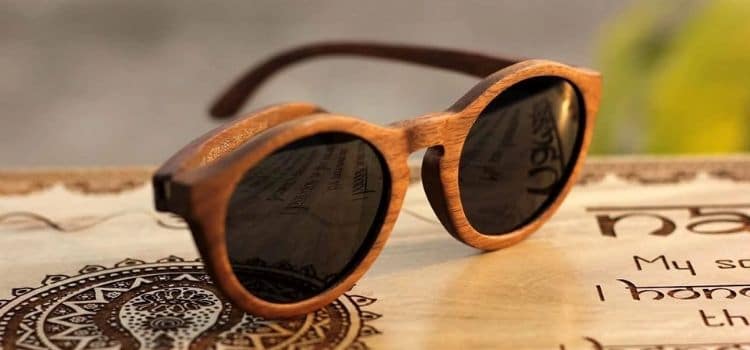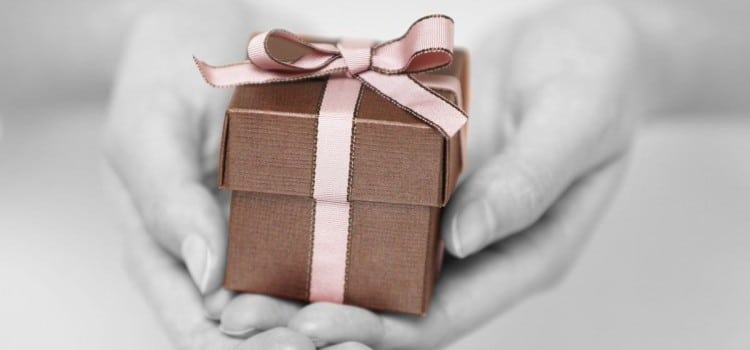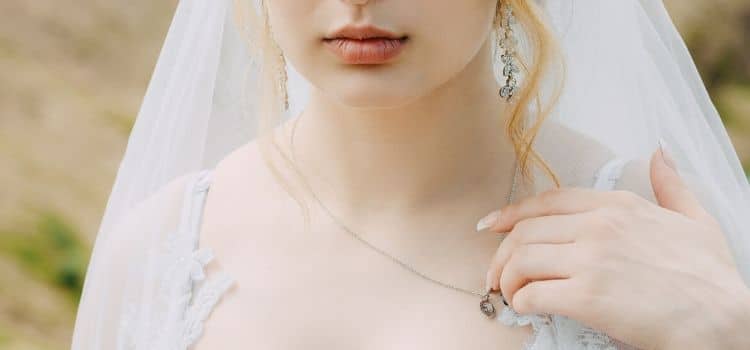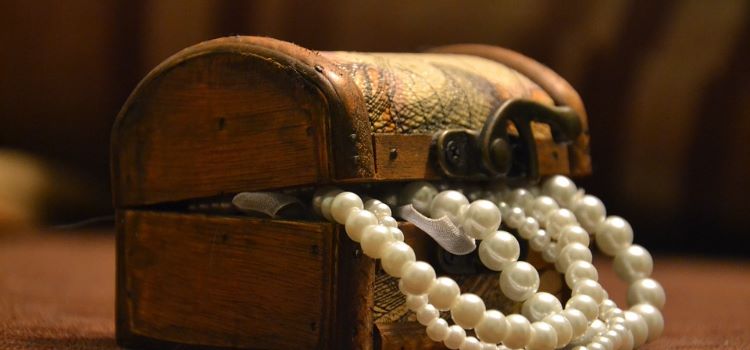Welcome to my comprehensive guide on understanding silver grades and their significance in the jewelry industry. In this article, I will walk you through the silver grading scale, silver purity levels, and the different types of silver grades. We will also explore the industry standards for silver grades and the criteria used in grading silver bullion. Whether you’re a jewelry enthusiast or an investor, having a good understanding of silver quality is crucial. So, let’s dive in!
What is Sterling Silver?
Sterling silver is a popular choice in the world of jewelry supplies. It is an alloy consisting of 92.5% silver and 7.5% other metals, typically copper or nickel. This combination of metals enhances the durability of sterling silver, making it suitable for everyday wear. The addition of copper or nickel also gives sterling silver its characteristic bright and shiny appearance.
One thing to note about sterling silver is that it can tarnish over time due to exposure to air and moisture. However, tarnish can be easily removed with the use of polishing products. It is recommended to clean sterling silver jewelry regularly to maintain its luster and shine.
Overall, sterling silver is a versatile and widely available option for jewelry making. Its durability, affordability, and beautiful appearance make it a popular choice among jewelry enthusiasts.
| Sterling Silver | |
|---|---|
| Composition | 92.5% silver and 7.5% other metals (copper or nickel) |
| Durability | More durable than pure silver |
| Tarnish | Can tarnish over time due to exposure to air and moisture |
| Polishing | Can be easily polished to remove tarnish |
What is Fine Silver?
In the world of silver, fine silver is considered the purest form. With a purity level of 99.9%, it boasts an exquisite shine and a slightly dull appearance compared to sterling silver. Fine silver is known for its softness, which gives it a unique feel and texture. However, this softness also makes it more susceptible to scratches and dents, so extra caution is needed when handling fine silver jewelry.
Fine silver is not as commonly used in jewelry due to its softness. However, it is highly sought after for specific applications such as silver clay and silver bezel wire. Fine silver clay allows artists to mold and shape the metal into intricate designs, while bezel wire is used to create settings for gemstones. If you’re looking for a piece of jewelry that combines craftsmanship and artistic expression, fine silver may be the perfect choice.
One notable advantage of fine silver is its exceptional resistance to tarnish. Unlike other grades of silver, fine silver tarnishes at a much slower rate, allowing your jewelry to maintain its stunning appearance with minimal maintenance. This makes it an excellent option for earrings or necklaces that may not be worn as frequently or exposed to the elements as much as other jewelry pieces.
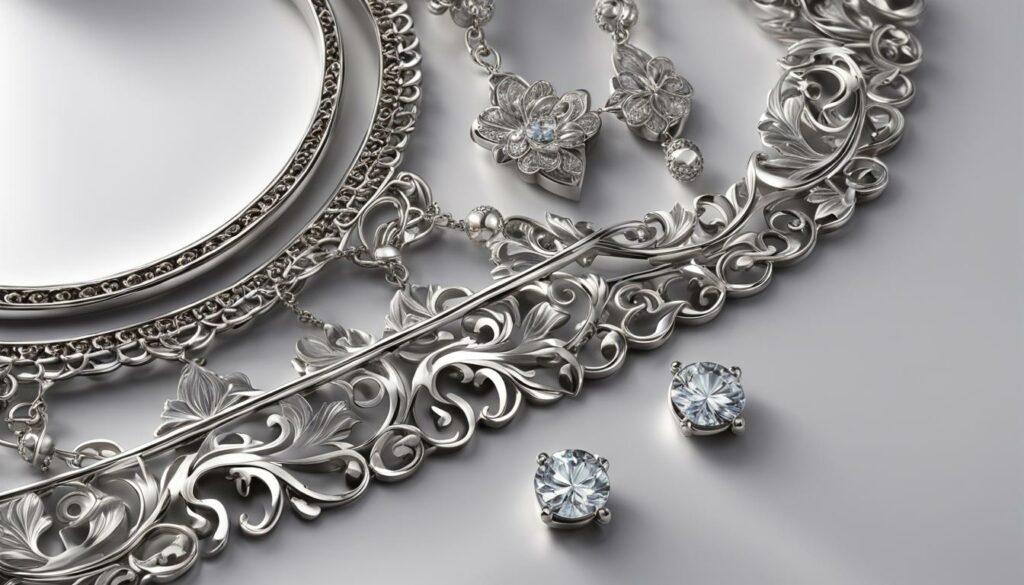
The Benefits of Fine Silver:
- Exceptional purity level of 99.9%
- Vitreous luster with a slightly dull appearance
- Soft texture and unique feel
- Perfect for silver clay and silver bezel wire applications
- High resistance to tarnish
When considering fine silver jewelry, it’s important to weigh the pros and cons. While its purity and resistance to tarnish are undeniable advantages, its softness may make it more susceptible to scratches and dents. If you appreciate the unique qualities and artistic potential of fine silver, it can be an exquisite addition to your jewelry collection.
Argentium Silver and Non-Tarnish Alloys
When it comes to silver jewelry, one popular alternative to traditional sterling silver is Argentium silver. Argentium silver is a type of non-tarnish alloy that contains at least 92.5% silver, along with copper and germanium as additional elements. The inclusion of these elements provides enhanced tarnish resistance, making Argentium silver a great choice for those who want to avoid the frequent polishing associated with sterling silver.
While Argentium silver offers the benefit of tarnish resistance, it is important to note that it can be more expensive and less readily available than traditional sterling silver. However, the added durability and low-maintenance nature of Argentium silver may be worth the price for those seeking a high-quality silver jewelry option.
To ensure the authenticity of Argentium silver, look for the quality stamp .925, which is the same as traditional sterling silver. This can make it difficult to differentiate between the two without proper documentation or authorization. It is always recommended to purchase from reputable sellers who can provide the necessary information and guarantee the quality of the jewelry.
| Aspect | Argentium Silver | Sterling Silver |
|---|---|---|
| Tarnish Resistance | High | Lower |
| Price | Higher | Lower |
| Availability | Less Common | Widely Available |
| Quality Stamp | .925 | .925 |
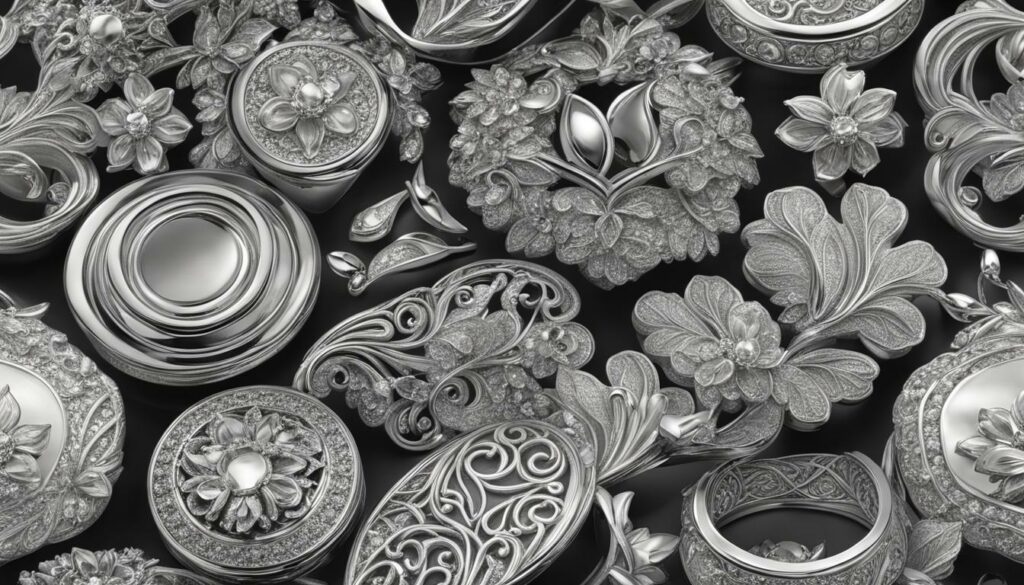
As with any type of silver jewelry, it is important to properly care for Argentium silver to maintain its beauty and longevity. Regular cleaning with a soft cloth can help remove dirt and oils, and storing it in a tarnish-resistant pouch or cloth can help minimize exposure to air and moisture. By following these simple care tips, you can enjoy the beauty and durability of Argentium silver jewelry for years to come.
Exploring Coin Silver
When it comes to silver jewelry, one term that often causes confusion is “coin silver.” Coin silver is an alloy consisting of 90% silver and 10% copper. Historically, metalsmiths would melt down coins to create objects, hence the name. Today, coin silver jewelry is relatively rare and often considered antique. If you come across a piece labeled as coin silver, it means it has a silver content of 90% and a copper content of 10%. The quality stamp for coin silver is typically .900, indicating its silver purity.
It’s important to note that coin silver is not as common as sterling silver or other silver grades in the jewelry market. Many coin silver pieces available today are considered antiques and may have historical value. If you appreciate unique and rare jewelry, coin silver pieces can be a fascinating addition to your collection. Just be sure to verify the authenticity and quality of the piece before making a purchase.
To summarize, coin silver is an alloy composed of 90% silver and 10% copper. It earned its name from the historical practice of using melted down coins to create objects. Coin silver jewelry is relatively rare today and often considered antique. If you come across a piece labeled as coin silver, it means it has a silver content of 90% and a copper content of 10%. The quality stamp for coin silver is typically .900.
| Grade | Silver Content | Copper Content | Quality Stamp |
|---|---|---|---|
| Coin Silver | 90% | 10% | .900 |
Understanding Silver Grades
When it comes to silver, understanding the different grades is important. Silver can come in various forms, from sterling silver to silver-filled, silver plated, nickel silver, and tribal silver. Each grade has its own characteristics and quality standards. It is essential to look for the appropriate quality stamp or designation to ensure you are getting a specific standard of silver. Different regions, such as Bali, Thailand, and Mexico, produce both high-quality silver and lower-grade alloys, so it is crucial to verify the quality and silver content of the jewelry.
One popular grade of silver is sterling silver, which is commonly used in jewelry making. It is composed of 92.5% silver and 7.5% other metals, usually copper or nickel. Sterling silver is known for its durability and versatility, making it a popular choice for everyday wear. Other grades, such as silver-filled and silver plated, offer different silver content and quality. While silver-filled jewelry has a thicker layer of silver bonded to a base metal, silver plated jewelry has a thin layer of silver applied to a base metal. These grades may be more affordable options, but they may not have the same longevity as sterling silver.
Nickel silver, also known as German silver, is a silver-like alloy that does not contain actual silver. It is composed of copper, nickel, and zinc. Despite its name, nickel silver does not have the same properties as silver and is not recommended for those with nickel allergies. Another grade to consider is tribal silver, which is often handmade by indigenous communities. Tribal silver pieces can be unique and carry cultural significance, but they may not adhere to standardized quality stamps. It is important to consider the source and authenticity of tribal silver before making a purchase.
| Grade | Composition | Quality Stamp |
|---|---|---|
| Sterling Silver | 92.5% silver + 7.5% other metals | .925 or “Sterling” |
| Silver-filled | Thick layer of silver bonded to a base metal | Varies; typically marked as “Silver-filled” |
| Silver Plated | Thin layer of silver applied to a base metal | Varies; typically marked as “Silver Plated” |
| Nickel Silver (German Silver) | Copper, nickel, and zinc (no actual silver content) | N/A (no standardized quality stamp) |
| Tribal Silver | Varies; handcrafted by indigenous communities | N/A (no standardized quality stamp) |
When purchasing silver jewelry, it is important to consider your personal preferences, budget, and desired quality. While sterling silver is widely recognized and offers a balance of durability and affordability, other grades may suit your specific needs or aesthetic preferences. Always look for reputable sellers and ensure that the jewelry comes with the appropriate quality stamp or documentation to guarantee its authenticity. By understanding the different silver grades and their significance, you can make informed choices and find the perfect piece of silver jewelry.
Testing Silver Quality
When purchasing silver jewelry, it is important to verify its quality. There are several methods available for testing the authenticity and purity of silver. These include X-ray testing, wet chemical analysis or assay, and the magnet test. Each method has its advantages and can provide valuable insights into the quality of the silver.
X-ray Testing
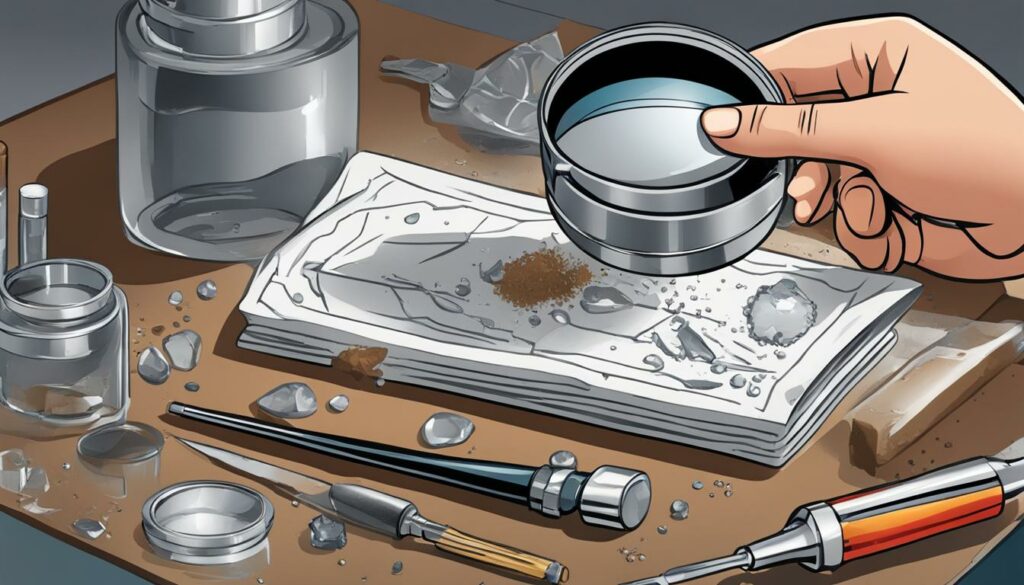 X-ray testing is a non-destructive method that uses X-rays to analyze the composition of the silver. It can accurately determine the purity and authenticity of the silver by measuring the composition of the metal. However, X-ray testing requires specialized equipment and a laboratory, making it less accessible for everyday use.
X-ray testing is a non-destructive method that uses X-rays to analyze the composition of the silver. It can accurately determine the purity and authenticity of the silver by measuring the composition of the metal. However, X-ray testing requires specialized equipment and a laboratory, making it less accessible for everyday use.
Wet Chemical Analysis or Assay
Wet chemical analysis, also known as assay, is another accurate testing method. It involves taking a small sample of the silver and subjecting it to chemical reactions in a laboratory. The results can provide precise information about the silver’s purity and authenticity. However, this method requires the silver to be permanently removed for analysis and should be performed by a reputable lab.
Magnet Test
The magnet test is a simple method that can be performed at home. Silver is not magnetic, so if a piece of silver jewelry is attracted to a magnet, it indicates the presence of other metals in the silver. While this test can give you a preliminary indication of the silver’s authenticity, it is not as accurate as X-ray testing or wet chemical analysis.
It is important to note that authenticity can also be verified through the hallmark stamp and the overall appearance and characteristics of the piece. A reputable seller will provide proper documentation and certifications for the silver they sell. Understanding these testing methods can help you make informed decisions when purchasing silver jewelry and ensure that you are getting the quality you desire.
Why Choose Sterling Silver Jewelry?
Sterling silver jewelry is a popular choice for many reasons. First and foremost, it is lightweight and comfortable to wear, making it perfect for everyday use. Whether you’re wearing a sterling silver necklace, bracelet, or earrings, you can enjoy the beauty of silver without feeling weighed down. Additionally, sterling silver is hypoallergenic for most people, making it a great option for those with sensitive skin. As long as the silver doesn’t contain a large percentage of nickel, it is unlikely to cause any allergic reactions.
Another advantage of choosing sterling silver jewelry is its value. Silver is a precious metal, and sterling silver pieces can be considered as an investment. The price of silver fluctuates with market conditions, making it a potential asset for the future. Unlike fashion jewelry made from base metals, sterling silver retains its value over time. It can also be a great heirloom piece to pass down to future generations.
Design versatility is another reason why sterling silver jewelry is so popular. Silver is a beautiful metal that can be crafted into a wide range of styles and designs. From delicate filigree earrings to bold statement rings, the possibilities are endless. Whether you prefer classic or contemporary designs, sterling silver offers something for everyone. Its versatility allows you to express your personal style and experiment with different looks.
| Benefits of Sterling Silver Jewelry |
|---|
| Lightweight and comfortable |
| Hypoallergenic for most people |
| Valuable and can be considered an investment |
| Design versatility for a wide range of styles |
In conclusion, sterling silver jewelry offers a lightweight and hypoallergenic option for everyday wear. It is not only a beautiful accessory but also a valuable investment. Its design versatility allows you to express your unique style. Whether you’re looking for a timeless piece or a trendy statement, sterling silver jewelry is a versatile and stylish choice.
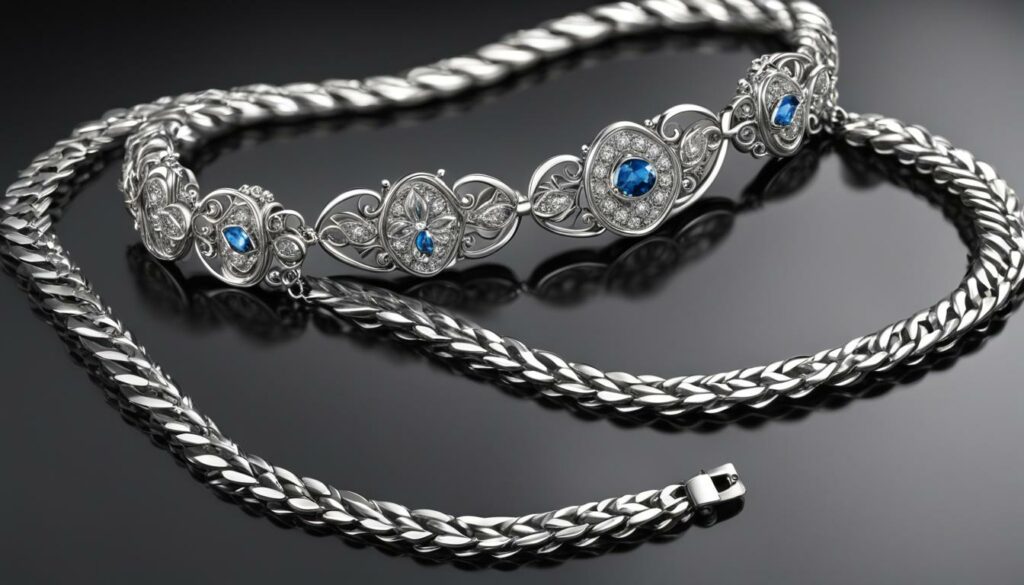
Spotting Fake Silver
When purchasing silver jewelry, it’s important to be able to differentiate between genuine silver and fake silver. Here are some methods to help you spot fake silver:
- Check for the hallmark: Genuine sterling silver jewelry will have a hallmark stamp, usually “925” or “sterling.” This stamp indicates that the jewelry is made from at least 92.5% silver. Be cautious if the jewelry does not have a proper hallmark or if it is marked as “silver plated.”
- Use the magnet test: Silver is not magnetic, so if a piece of jewelry is attracted to a magnet, it is likely not made of genuine silver.
- Pay attention to the odor: Genuine silver should not have a strong odor. If the jewelry emits a metallic smell, it may be silver plated or made from a non-sterling silver alloy.
- Purchase from a reputable seller: Buying from a trusted and reputable seller significantly reduces the chances of buying fake silver. Look for sellers with good reviews and a track record of selling genuine silver jewelry.
By being vigilant and following these tips, you can avoid purchasing fake silver jewelry and ensure that you are getting the quality and value you expect.
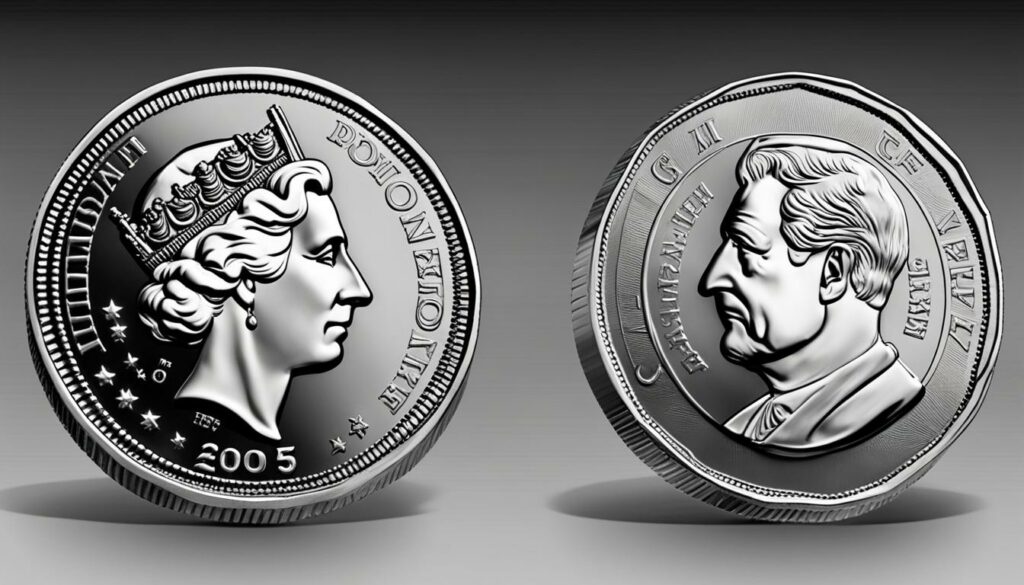
Tips for Buying Sterling Silver Jewelry
When it comes to buying sterling silver jewelry, there are a few important factors to consider. Ensuring the quality and authenticity of the piece is crucial to making a smart purchase. Here are some tips to guide you:
- Check for the hallmark: Look for the hallmark stamp on the jewelry, typically “925” or “sterling.” This indicates that the piece is made of genuine sterling silver.
- Consider the quality: Examine the craftsmanship and overall quality of the jewelry. Look for well-made pieces with smooth edges, secure clasps, and no visible defects.
- Be aware of tarnishing: Sterling silver can tarnish over time. Choose jewelry that is lustrous and free from tarnish, as this indicates a higher-quality piece.
- Buy from a reputable brand: Purchase from well-known brands or reputable sellers who have positive reviews. This ensures that you are getting a genuine piece of sterling silver jewelry.
- Check the return policy: Before making a purchase, familiarize yourself with the seller’s return policy. This gives you peace of mind in case you’re not satisfied with your purchase or need to exchange it.
Table: Factors to Consider When Buying Sterling Silver Jewelry
| Factor | Description |
|---|---|
| Hallmark | Look for the hallmark stamp indicating genuine sterling silver. |
| Quality | Examine the craftsmanship and overall quality of the jewelry. |
| Tarnishing | Choose jewelry that is lustrous and free from tarnish. |
| Reputable Brand | Purchase from well-known brands or reputable sellers. |
| Return Policy | Familiarize yourself with the seller’s return policy. |
By following these tips, you can make informed decisions when purchasing sterling silver jewelry. Remember to always check for the hallmark, consider the quality, be aware of tarnishing, buy from a reputable brand, and check the return policy. With these guidelines, you can confidently add beautiful sterling silver pieces to your jewelry collection.
Caring for Your Sterling Silver Jewelry
Proper care is essential for keeping your sterling silver jewelry looking its best. Regular cleaning with warm water and mild dish soap can help remove dirt and oils. For tarnished silver, a paste made from baking soda and water or a soak in white vinegar and baking soda can help restore its shine. Wearing your sterling silver jewelry regularly can also help prevent tarnish, as your natural oils can help maintain its luster. Avoid exposing your jewelry to harsh chemicals, lotions, perfumes, or hairsprays, as these can accelerate tarnishing and corrosion.
| Cleaning Method | Instructions |
|---|---|
| Warm Water and Mild Dish Soap | Fill a bowl with warm water and a small amount of mild dish soap. Gently scrub your silver jewelry with a soft toothbrush or cloth. Rinse with clean water and pat dry with a soft towel. |
| Baking Soda Paste | Mix baking soda with a small amount of water to create a thick paste. Apply the paste to your tarnished silver jewelry and gently rub it in a circular motion. Rinse with water and dry thoroughly. |
| White Vinegar Soak | In a bowl, mix equal parts white vinegar and water. Place your tarnished silver jewelry in the solution and let it soak for 2-3 hours. Rinse with water and dry thoroughly. |
In addition to regular cleaning, it is important to store your sterling silver jewelry properly. Keep it in a cool, dry place, away from direct sunlight and moisture. To prevent scratches, store each piece separately in a soft cloth or jewelry pouch. If you notice any signs of tarnish or damage, promptly address the issue to prevent further deterioration. With proper care and maintenance, your sterling silver jewelry can retain its beauty and sparkle for years to come.
Remember:
- Clean your sterling silver jewelry regularly with warm water and mild dish soap.
- Use baking soda paste or a white vinegar soak to restore the shine of tarnished silver.
- Avoid exposing your jewelry to harsh chemicals, lotions, perfumes, or hairsprays.
- Store your sterling silver jewelry in a cool, dry place, away from sunlight and moisture.
- Address any signs of tarnish or damage promptly to prevent further deterioration.
By following these simple care tips, you can enjoy your sterling silver jewelry for a lifetime and keep it looking as beautiful as the day you first got it.
Frequently Asked Questions About Sterling Silver Jewelry
When it comes to sterling silver jewelry, there are often questions that arise. In this section, I will address some of the most frequently asked questions about sterling silver, from its tarnishing properties to its purity and care requirements.
Q: Does sterling silver tarnish?
A: Yes, sterling silver can tarnish over time. This is a natural reaction to exposure to air and certain elements. However, with proper care and maintenance, you can easily restore its shine. Regular cleaning and storing your silver jewelry properly can help minimize tarnish.
Q: How pure is sterling silver?
A: Sterling silver is composed of 92.5% pure silver and 7.5% other metals, usually copper. This alloy is what gives sterling silver its strength and durability, allowing it to be crafted into various jewelry pieces. The purity of sterling silver is indicated by the hallmark stamp of “925” or “sterling.”
Q: Is sterling silver soft?
A: Compared to other metals, such as gold or platinum, sterling silver is relatively soft. This softness allows for intricate designs and detailed craftsmanship. However, it also means that sterling silver jewelry is more prone to scratches and dents. Taking care when wearing and storing your silver jewelry will help minimize these effects.
Q: Does sterling silver contain copper?
A: Yes, sterling silver does contain copper. The addition of copper to the silver alloy increases its strength and durability. Copper also contributes to the warm, reddish hue that is characteristic of sterling silver.
Q: How do I care for sterling silver jewelry?
A: Taking proper care of your sterling silver jewelry is important to maintain its beauty and longevity. To clean tarnished silver, you can use a soft cloth or a silver polishing cloth. Avoid using harsh chemicals or abrasive materials, as they can damage the silver. Storing your silver jewelry in airtight bags or lined jewelry boxes can also help prevent tarnish.
| Question | Answer |
|---|---|
| Does sterling silver tarnish? | Yes, but it can be easily cleaned and restored. |
| How pure is sterling silver? | Sterling silver is 92.5% pure silver and 7.5% other metals. |
| Is sterling silver soft? | Yes, but it can be more vulnerable to scratches and dents. |
| Does sterling silver contain copper? | Yes, copper is added to increase durability and strength. |
| How do I care for sterling silver jewelry? | Clean with a soft cloth and store in airtight bags or boxes. |
Conclusion
After exploring the various silver grades and understanding their quality standards, it is evident that silver jewelry holds significant value and offers a wide range of options for investment and personal adornment. Sterling silver, with its balance of durability and beauty, remains the most popular grade in the industry. However, fine silver, Argentium silver, and coin silver each have their unique characteristics and applications.
When purchasing silver jewelry, it is essential to look for the appropriate quality stamp to ensure you are getting the desired standard of silver. Additionally, buying from reputable sellers will guarantee the authenticity and quality of your purchase. Taking proper care of your silver jewelry, such as regular cleaning and avoiding harsh chemicals, will help maintain its longevity and beauty over time.
Whether you consider silver jewelry as an investment or simply enjoy wearing it for its aesthetic appeal, understanding silver grades and quality standards is crucial. With the knowledge gained from this comprehensive guide, you are now equipped to make informed choices and appreciate the value and significance of sterling silver jewelry.
FAQ
What is sterling silver?
Sterling silver is an alloy of 92.5% silver and 7.5% other metals, usually copper or nickel. It is the jewelry quality standard in the United States and most world markets.
What is fine silver?
Fine silver is the purest form of silver, with a purity level of 99.9%. It is very soft and prone to scratches and dents. Fine silver is less common in jewelry but is popular for certain applications like silver clay and bezel wire.
What is Argentium silver?
Argentium silver is a type of non-tarnish alloy that contains at least 92.5% silver, with copper and germanium as additional elements. It is designed to be more resistant to tarnish than sterling silver.
What is coin silver?
Coin silver is an alloy consisting of 90% silver and 10% copper. It earned its name because metalsmiths historically used melted down coins to make objects. Coin silver jewelry is relatively rare today and may have historical value.
What are the different silver grades?
Silver can come in various forms, including sterling silver, fine silver, Argentium silver, coin silver, and silver-filled. Each grade has its own characteristics and quality standards.
How can I test the quality of silver?
There are several methods to test the quality of silver, including X-ray testing, wet chemical analysis, and the magnet test. Authenticity can also be verified through the hallmark stamp and the overall appearance and characteristics of the piece.
Why choose sterling silver jewelry?
Sterling silver jewelry is lightweight, hypoallergenic for most people, and considered valuable. Its versatility in design allows for a wide range of styles and customization. It is also durable and suitable for everyday wear.
How can I spot fake silver?
To spot fake silver, check for the proper hallmark stamp, use the magnet test, and pay attention to any strong odors. Purchasing from reputable sellers is also recommended.
What should I consider when buying sterling silver jewelry?
When buying sterling silver jewelry, check for the hallmark stamp, consider the overall quality and craftsmanship of the piece, and look for luster and absence of tarnish. Purchase from reputable brands or sellers with good reviews and clear return policies.
How do I care for my sterling silver jewelry?
Regular cleaning with warm water and mild dish soap can help remove dirt and oils. Baking soda paste or vinegar and baking soda soak can restore shine to tarnished silver. Avoid exposing your jewelry to harsh chemicals, lotions, perfumes, or hairsprays.
What are some common questions about sterling silver jewelry?
Common questions about sterling silver jewelry include inquiries about tarnishing, purity, softness, the presence of copper in the alloy, and tips for caring for the jewelry.
Source Links
- https://www.halsteadbead.com/articles/types-silver-jewelry
- https://www.withclarity.com/blogs/metal/sterling-silver-guide
- https://www.alexmakina.com/what-are-the-types-of-silver
